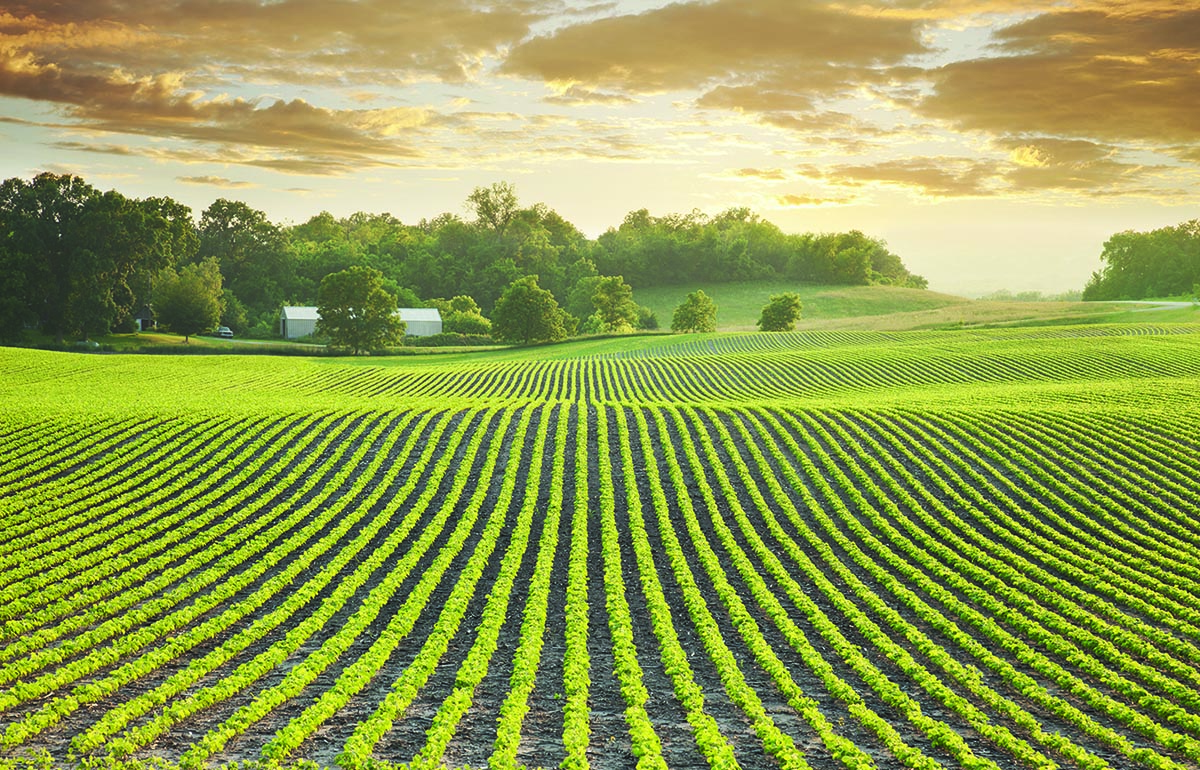
(Photo: Iowa Soybean Association)
Sharing soy's sustainability story
January 18, 2022 | Kriss Nelson
Customers have increasing expectations that the products they purchase contain sustainable ingredients.
Though it seems new, the conversation about sustainability and sourcing sustainable soy started in Europe nearly 10 years ago. Farmers have focused on it for generations, but not necessarily under the buzzword of “sustainability,” according to Abby Rinne, director of sustainability for the U.S. Soybean Export Council (USSEC).
“Customers are looking to verify the soy they are purchasing is raised responsibly from an environmental, social and economic perspective,” Rinne says.
Recognizing the need to have a formalized response to ensure the sustainability of soy, the U.S. Soy Sustainability Assurance Protocol (SSAP) was developed through a multistakeholder process with participants throughout the value chain.
SSAP looks at the U.S. production in aggregate and includes third-party audits by the Natural Resources Conservation Service.
Sustainable farming practices, such as cover crops, no-till and saturated buffer strips, allow farmers to use less water, prevent soil erosion and decrease energy use. This means U.S. soy farmers are doing more with less to meet the world’s growing demand for food.
Four directives of the SSAP
The U.S. Sustainability Assurance Protocol describes the regulations, processes and management practices that ensure sustainable soybean production.
- Biodiversity and High Carbon Stock: The regulatory obligations to enhance biodiversity and maintain wetlands, grasslands and forests.
- Production Practices: Includes practices that enhance the environment and protect our natural resources while increasing production efficiency.
- Public and Labor Health and Welfare: Regulations and laws providing for the protection of the public and workers.
- Continuous Improvement: Practices and programs that farmers participate in to be more efficient and environmentally sound.
In 2014, key U.S. soy organizations adopted four goals to achieve by 2025 as part of U.S. soybean farmers’ commitment to continuous improvement.
They include reducing land-use impact by 10%, reducing soil erosion by 25%, increasing energy use efficiency by 10% and reducing greenhouse gas emissions by 10%.
The SSAP has been successful; nearly 40% of U.S. soybean exports with achieving an SSAP certification.
SSAP shipments have grown steadily since its development in 2014. In the first year, 6,845 metric tons of soybeans were shipped with an SSAP certificate. In the last marketing year, which ended on Aug. 31, 2021, more than 28.4 million metric tons of U.S. soy were shipped with an SSAP certificate.
Rinne expects the number of soybean exports achieving the SSAP certification to grow.
“International customers are requiring the soy they are purchasing to be verified as sustainable,” says Rinne. “Various groups have accepted the SSAP around the world as a means of verifying sustainability.”
For example, SSAP has been positively benchmarked against the European Feed Manufacturer’s Federation 2021 Soy Sourcing Guidelines. It was also recognized by the Tokyo Olympic Procurement Committee for the 2021 Olympics and is included in the Global Seafood Alliance Best Aquaculture Practices.
Companies sourcing U.S. soy with SSAP verification can use a trademarked “Sustainable U.S. Soy” logo on their packaging. The emblem allows companies to highlight their dedication to purchasing sustainable soy. More than 35 international companies use the logo on more than 850 products. The products include items such as natto in Japan, soymilk in Taiwan and feed in the Dominican Republic.
Firsthand look
A USSEC trade team from Central and South America saw Iowa farmers’ commitment to producing soy sustainably during a visit in November.
“It’s important to build relationships with all our major buyers of soybeans and soybean meal to help them better understand what is going on in the marketplace,” says Grant Kimberley, sr. director of market development at the Iowa Soybean Association (ISA).
The 23 members of the trade team representing Mexico, Ecuador, Panama, Guatemala and Colombia were interested in learning about the U.S. soybean industry’s sustainability practices as part of the SSAP.
“An important tenant of sustainability is continuous improvement,” says Heath Ellison, senior field services program manager at ISA. “While Iowa farmers are some of the most sustainable in the world, we certainly recognize there are always opportunities to improve.”
ISA staff engaged with the trade team during its visit to ISA. The team learned about the programs and research conducted in cooperation with farmers and other sustainability partners.
Chris Hay, senior research scientist at ISA, says ISA’s efforts are helping farmers apply conservation practices, which can help maintain crop production while addressing water quality challenges.
“There is a move toward being able to show how soybeans are sustainably produced,” says Hay. “It is important we continue to develop and implement practices that can improve downstream water quality while sustainably producing the crop.”
Kimberley is looking forward to more visits with soy customers in the future.
“We want to build overall demand, but we are also working on building customer preference for U.S. soybeans and soybean products to the point they are keeping the U.S. as the first option when they buy soy products,” he says.
Back